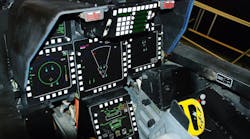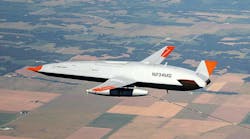By Courtney E. Howard
FAIRFIELD, N.J. - Morgan Advanced Ceramics Inc. in Fairfield, N.J., will provide hexagonal ceramic insulators for intensifiers in NASA’s OWL Earth-orbiting system to study air showers initiated by ultrahigh-energy cosmic rays (UHECR).
Morgan is doing the work for NASA through a contract with Photek Ltd., in St. Leonards on Sea, England.
The use of ceramic in the OWL’s sensors will help generate an accurate image of these particles, and will enable scientists to make discoveries about their origins-whether they are harbingers of new physics, associated with hidden dimensions, or generated by high-density trapped defects of space left over from the Big Bang.
When UHECRs enter the Earth’s atmosphere, a disk of ultraviolet fluorescence flashes through the night’s sky, traveling at nearly the speed of light, and lasting for a few tens of microseconds. The OWL’s eyes must be large so they collect as much of the UV signal as possible, and it is essential that the intensifiers are accurate to show a true representation of the UV light.
“We were looking for a partner that would be able to supply the high-precision, dimensionally accurate ceramic components that are fundamental to the intensifier,” says, Gareth Jones, managing director at Photek. “We chose Morgan Advanced Ceramics for its knowledge and expertise in the industry and proven precision engineering capability.”
Ceramic is a good electrical insulator, which is an important characteristic for the intensifiers. In an intensifier, a lens focuses an image into a vacuum tube, which is made of ceramic. A photocathode at one end releases electrons by the photoelectric effect of the incoming photons.
“There was an immediate challenge surrounding the design of the component,” says Yannick Galais, commercial manager at Morgan Advanced Ceramics. “During the manufacturing process, the component is fired in a kiln and it shrinks by around 20 percent in size as it is sintered. Tight control of raw material production and the methods used to manufacture the part are essential to ensure that it shrinks evenly in all directions without distortion and cracking.”
The accuracy of the component is paramount. Galais continues: “We also had to achieve an extremely tight tolerance of five microns.”
The two companies together came up with a 168-millimeter across flats, hexagonal design that enables the intensifiers to fit together in a honey-comb style, enabling the maximum collection of UV light.
Morgan Advanced Ceramics has shipped three pairs of the component to Photek, where they have been assembled and taken to Rutgers University in New Jersey for testing prior to installation. OWL is planned to be launched in 2010 and the project is expected to need more than 100 intensifiers per eye.
For more information, contact Morgan Advanced Ceramics online at www.morganadvancedceramics.com.


